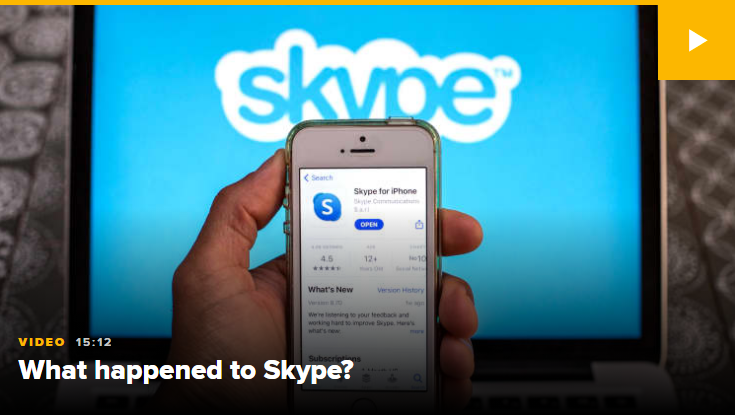The rise and fall of Skype

There has been a change in Skype. There is a possibility that you have noticed something.
People used the app to connect with friends and family members without paying long-distance charges in the 2000s. It was purchased by eBay in 2005. An investor group led by Silver Lake acquired the majority stake after that deal didn’t work out as planned. The company was then acquired by Microsoft for $8.5 billion in 2011.
In spite of its backing by one of the world’s largest software companies, Skype has fallen by the wayside. Consumers and business workers used Zoom and Meta’s WhatsApp during the pandemic, and now there is no shortage of options for connecting with friends and colleagues over smartphones.
According to Jim Gaynor, vice president of research at Directions on Microsoft, Skype is still primarily used for one-to-one communication.
Besides promoting Skype in Outlook and Windows, Microsoft has also enriched the app with its Bing generative artificial intelligence chatbot. However, the numbers still don’t look great.
According to a Microsoft spokesperson, Skype had 40 million daily active users in March 2020, but that number has dropped to 36 million. In contrast, Microsoft’s newer Teams communication app has grown in popularity, rising from nearly 250 million monthly users in July 2021 to over 300 million in January 2022.
A Skype founder, Jaan Tallinn, says he still uses Skype for calls even after leaving the company more than a decade ago.
“I’m happy to comply with other channels if people want to use them,” he said.
The future of Skype is unclear, but it’s not disappearing anytime soon.
A Microsoft spokesperson wrote in an email that Skype will remain a great option for those who enjoy messaging, audio and video calling, as well as Bing Chat.
CNBC’s digital video above discusses Skype’s growth and struggles over the past 20 years.
